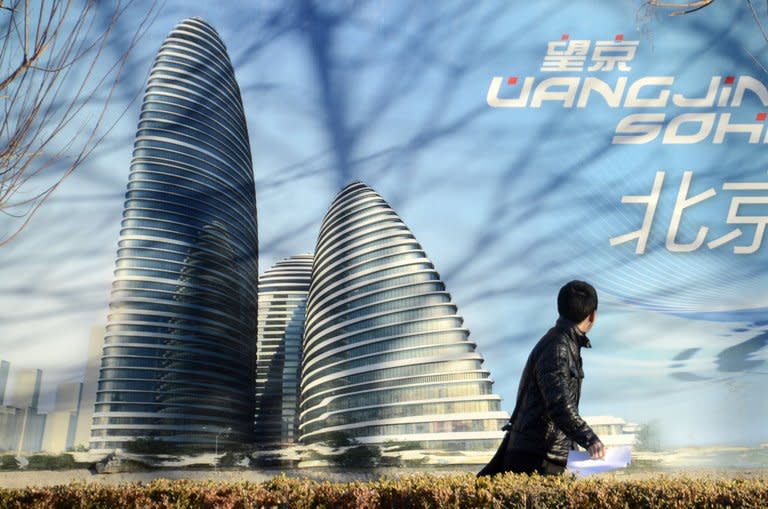China developer 'copies' star architect's design
Already famed for fake designer bags and pirated DVDs, imitation in China may have reached new heights with a set of towers that strongly resemble ones designed by renowned architect Zaha Hadid. A developer in the southwestern city of Chongqing is putting up buildings that share the distinctive round contours and white stripes of a 39-floor shopping and office complex conceived by the British-Iraqi designer and being built in Beijing. The magazine China Intellectual Property noted that the "design sketch indeed shows certain similarities", and listed several buildings by the developer that resembled others elsewhere in China. Satoshi Ohashi, project director at Zaha Hadid Architects for the Beijing complex, told Der Spiegel Online: "It is possible that the Chongqing pirates got hold of some digital files or renderings of the project." It could rank among the more flagrant ripoffs in a country already notorious for imitating foreign products without permission -- but the developer of the Chongqing project, Meiquan 22nd Century, has denied any copying. Such accusations "do not conform with the truth" and "have had a negative impact" on the company, general manager Yao Yumao said at an earlier press conference, according to a transcript published online. Hadid was the first woman to win architecture's prestigious Pritzker prize. Her avant-garde designs have been in high demand in China, where she has a granite and glass opera house in the southern city of Guangzhou and an arts centre under construction in Chengdu, among other projects. China's ability to reproduce foreign products is best known for imitation luxury purses and copies of Hollywood films. But knockoffs have ranged from a three-dollar version of Kate Middleton's engagement ring to fake Apple stores and an entire Austrian village. In 2012 a developer unveiled a recreation of the centuries-old alpine hamlet of Hallstatt, a UNESCO World Heritage site, in what the state-run news agency Xinhua called "a bold example of China's knock-off culture".



